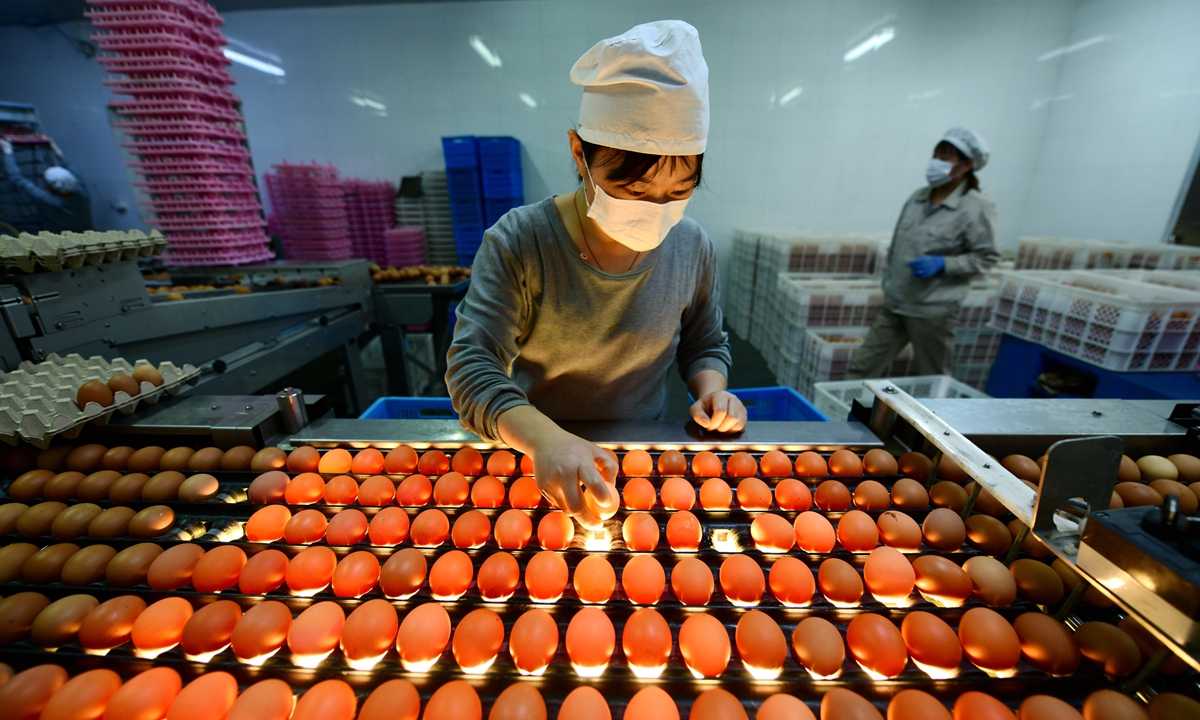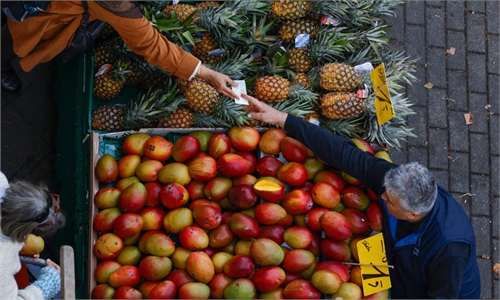
A worker sorts eggs into different grades at a modern chicken farm in East China's Jiangsu Province on May 22, 2022. Photo: VCG
China's official Consumer Price Index (CPI), a main gauge of inflation, increased 2.1 percent year-on-year and 0.1 percentage point month-on-month, but down from the 2.8 percent growth in September, data from the National Bureau of Statistics (NBS) revealed on Wednesday.
The slowdown in the growth rate of CPI both on the yearly and monthly basis was affected by the drop in post-holiday consumption demand compared to a high base in 2021, Dong Lijuan, chief statistician with the NBS, said in a statement posted on the bureau's website.
The prices of fresh produces such as vegetables, fruits, and aquatic products dropped 4.5 percent, 1.6 percent and 2.3 percent year-on-year respectively, while pork prices surged 9.4 percent in October compared with the previous year affected by the national hog production cycle, short-term selling pressure and high consumption demand, read the statement.
The figures in October reflected a stable price attributed to the implementation of targeted monetary policy, Dong Dengxin, director of the Finance and Securities Institute of the Wuhan University of Science and Technology, told the Global Times on Wednesday.
Dong Dengxin added that despite the economic recovery being impacted by the COVID-19 outbreak, overall steady growth remains likely.
As for the impact from pork prices, Dong Dengxin noted that pork prices will likely to remain relatively stable during the upcoming New Year's holiday and the Chinese New Year holidays based on the current supply capacity along with the nation's efforts and measures for price stabilization. He also noted that reduced population movement resulting from the pandemic may lower consumption demand.
The National Development and Reform Commission (NDRC), China's top economic planner, said on November 1 that hog prices have fallen back to a certain extent during the week of October 24 to 28 but still recorded a more than 40 percent year-on-year increase.
The NDRC added that the nation would soon release the seventh batch of pork reserves combined with strengthened guidance for local authorities to form regulatory cooperation, aiming to further improve the market supply and price stability.
Moving forward, Dong Dengxin expected a rise in consumption for the fourth quarter as the holidays approach on top of the ongoing Double 11 shopping festival.
The Producer Price Index (PPI) in October dropped 1.3 percent compared with 2021. Dong Lijuan noted that the month-on-month growth slightly went up due to increasing industrial demand in some sectors, while the year-on-year growth rate drop resulted from a relatively large comparison basis in 2021.

